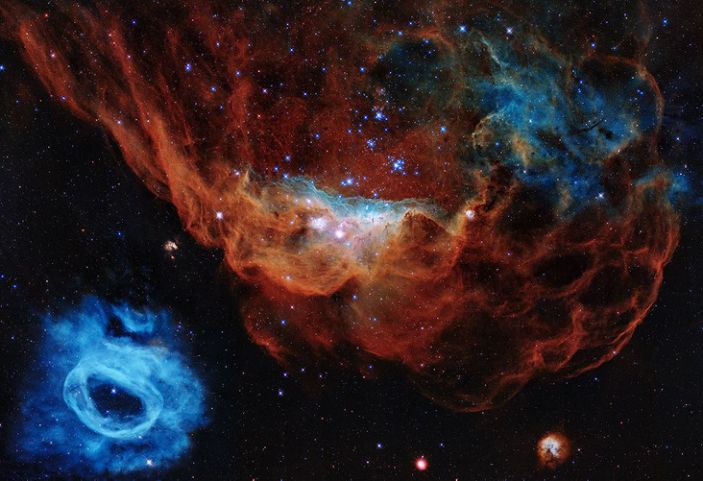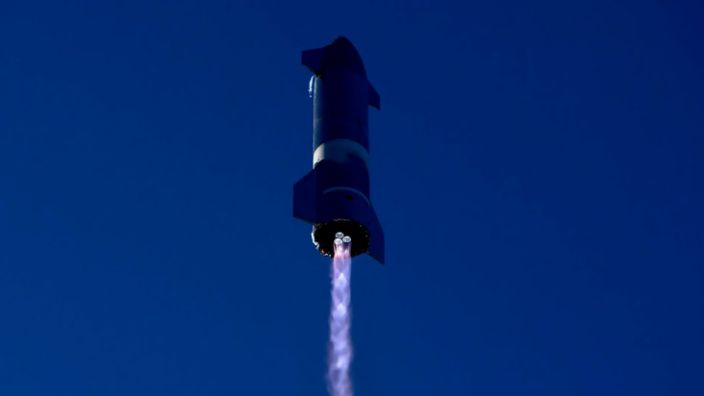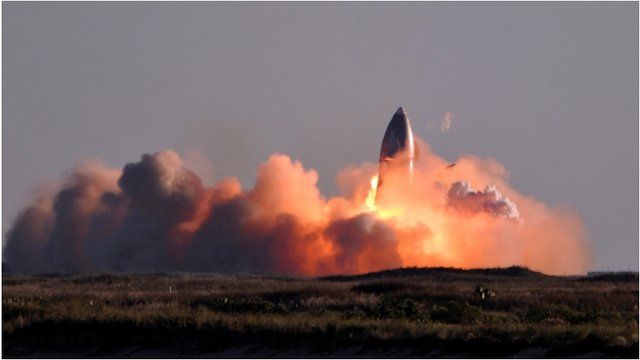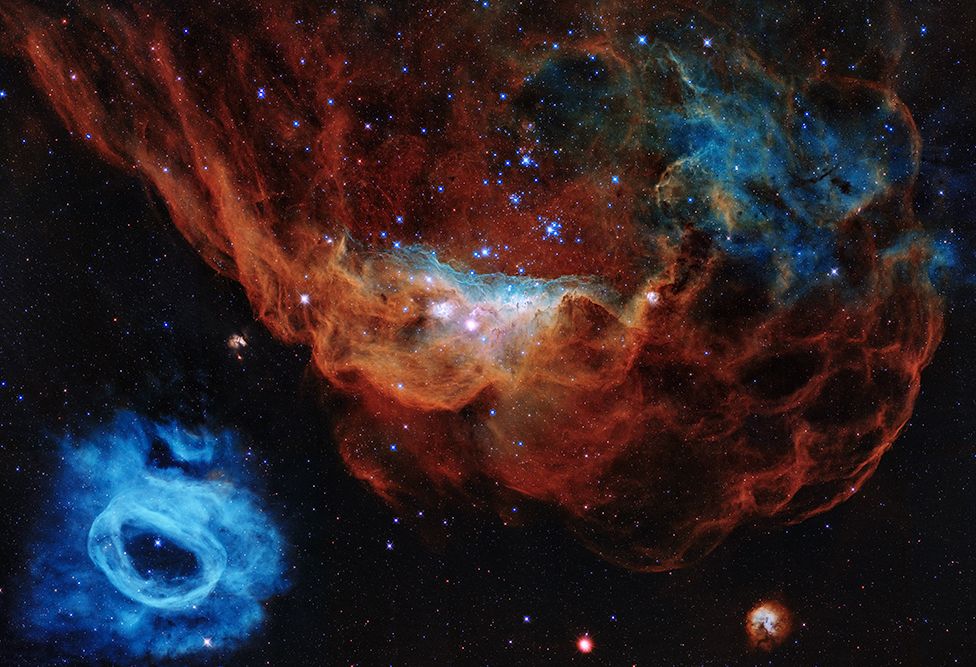There have been stunning cosmic photos to feed in 2020, from Hubble’s 30th birthday photo to daring sample shots of an asteroid. Here’s our pick of the year’s deals.
Cosmic reefs of the Hubble Telescope

The Hubble Telescope, one of the most important scientific instruments ever built, celebrated its 30th anniversary in April.
To celebrate the occasion, an impressive photograph was released The star forming region appears near our Milky Way.
In this impressive Hubble image, the Red Giant Nebula (NGC 2014) and its smaller blue neighbor (NGC 2020) are in the Large Magellanic Cloud, a Milky Way galaxy located 163,000 light-years away.
Nebulae are massive clouds of dust and interstellar gas where star formation can occur.
At the heart of NGC 2014 is a cluster of bright stars, each of which is 10 to 20 times the mass of our sun.
The image was called „cosmic coral reefs“ because astronomers believed that the nebulae looked like a world under the sea.
BBC Horizon documentaryAired to coincide with the anniversary, it featured stunning 3D visualizations of iconic Hubble images – such as the Pillars of Creation, part of the Eagle Nebula.
Also see: The Hubble 3D Space Telescope has been revealed
Grab the asteroid
This year, NASA’s Osiris Rex performed A bold „touch and launch“ maneuver with the asteroid Bennu, In order to collect rock and soil samples for delivery to Earth.
Asteroids like Bennu are primitive relics from the dawn of the solar system. They are the free building blocks of planets, and they provide a window into how worlds like Earth arose.
For sample collection, Osiris-Rex used a long boom with a ring-shaped collection chamber at the end. The spacecraft descended to the surface of Bennu, laden with a squirt of nitrogen, as the boom attached to the asteroid.
This was for the gas to move the surface of Benno, allowing the asteroid fragments to float into the collection chamber.
The strategy appears to have worked, as shown in the photo sequence above.
Meanwhile, on December 5, a Japanese mission to collect samples from a different asteroid returned to Earth with its valuable lair. The Hayabusa-2 spacecraft launched a sample return capsule, which Parachute landed safely in the Australian desert.
Samples will be analyzed at a processing facility in Sagamihara City, Japan.
Up close with the sun
January saw the release of images taken by the Daniel K Inouye Solar Telescope (DKIST) in Hawaii Show the surface of the sun in unprecedented detail.
The images show hive-like structures roughly the size of the US state of Texas. They are masses of hot and exciting gases or plasma.
Illuminated areas indicate where this material will rise; The dark corridors between them are where the cold plasma sinks.
DKIST is a brand new facility at Haleakalā, a 3,000-meter-high volcano on Hawaiian Maui Island.
Scientists want to use it to reveal new insights into the dynamic behavior of our parent star, in the hope that they can better predict its energetic revolutions.
These massive explosions of charged particles could damage satellites orbiting Earth, harm astronauts, and even disrupt electrical grids.
Jupiter flies past
https://www.youtube.com/watch?v=xh3EKDghbuU
NASA launched the Juno spacecraft in 2011, and it continues to send amazing images from the largest planet in the Solar System – Jupiter.
The probe captured images of the gas giant’s vortex clouds during its 27th near-world flyby on June 2.
Citizen scientist Kevin M. Gill then converted the data into a video, combining 41 still images taken during Juno’s close pass.
Still images were projected digitally onto a sphere, with a virtual „camera“ providing views of Jupiter from different angles.
Among other things, the footage provides amazing views of Jupiter’s most prominent feature, the Giant Red Spot – which is actually a giant continuous storm.
Spacecraft test
Much like a rocket ship from the golden age of science fiction, the Starship commanded by Elon Musk will – in time, he hopes – transport humans to the red planet.
in December, SpaceX tested its first complete prototype vehicle, And dispatched on a 12.5-kilometer journey directly from its terminal at the company’s Boca Chica facility in South Texas.

We’re a little tricked into including it here, because the images aren’t from space, as such. But we might see him there someday, in the not-too-distant future.
The test flight displayed some unique features of the spacecraft, including the methane-burning Raptor engines and a flight path that involved a belly-facing descent to Earth followed by a reversal to vertical just before landing.

At this point in testing, the Starship’s prototype, called SN8, approached the board very quickly and hard, causing what Musk describes as the RUD – the unscheduled rapid disassembly. In other words, a crash.
But the flight will give SpaceX massive amounts of engineering data to chew on, helping them improve the vehicle. And the next prototype – SN9 – awaits its turn on the launch pad.
Follow Paul On Twitter

„Total Social Media Ninja. Introvertiert. Schöpfer. TV-Fan. Preisgekrönter Unternehmer. Web-Nerd. Zertifizierter Leser.“


